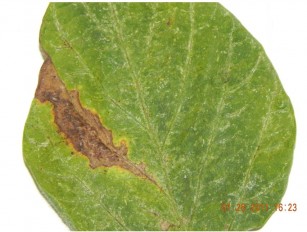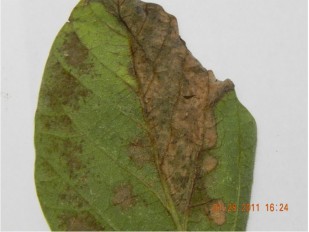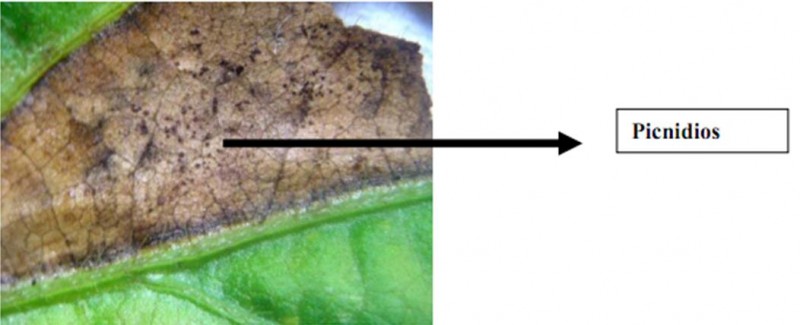Phyllosticta sojicola – Emerging soybean foliar disease


In our country we have traveled this disease detected in crops, but never in significant levels of incidence and severity.
Virtually all world literature relates the growth of this disease with wet years and lower temperatures than usual, which does not correspond to the conditions of this summer (2011). The disease can cause severe defoliation in the early stages of soybean growth, but only in certain cases by what is generally considered of little or minor.
This is a necrotrophic fungus whose characteristic symptoms are oval spots or V-shaped cut. Injuries are to brown chlorotic ingredient with or without halo and then become gray or bronze. Also causes spots on pods and stems.

Its fruiting correspond to pycnidia whose internal spores are released and spread mainly by rain. These pycnidia are usually visible in old injuries under hand lens, numerous black bodies. The images attached show the typical symptoms of the disease and the presence of fruiting.
As a control (if it becomes necessary) there is not much information in the region. Like everything necrotrophic pathogen, crop rotation and use of healthy seeds are preferential measures.
On the use of specific fungicides, in our country there is no information on the rest of the world are rarely used.
